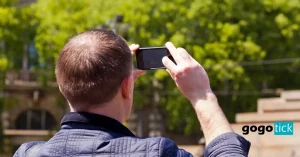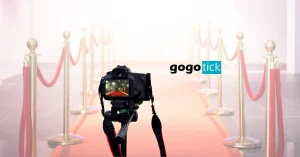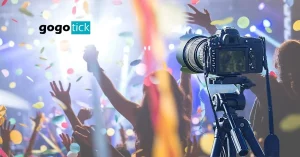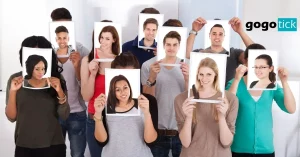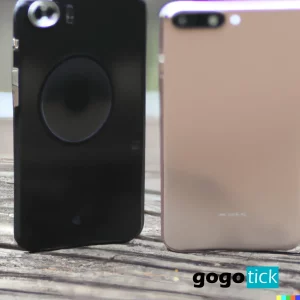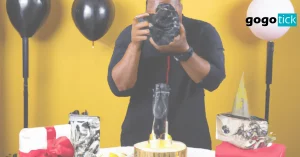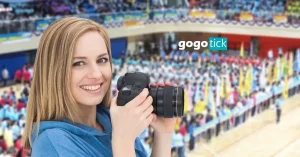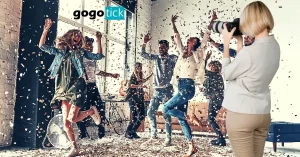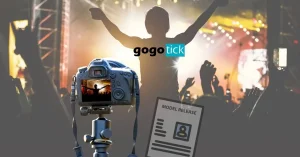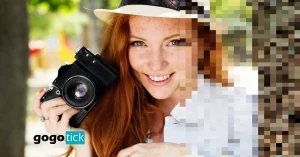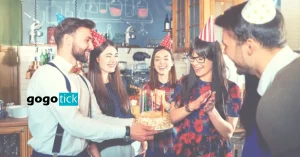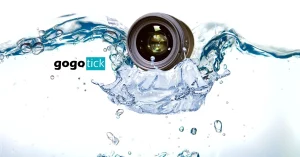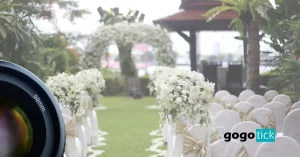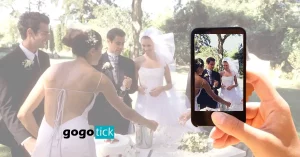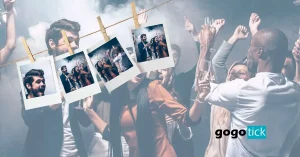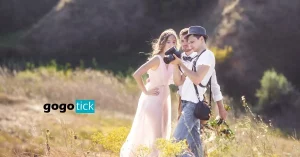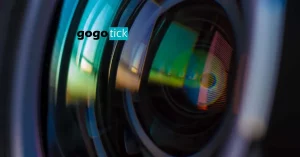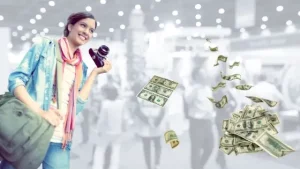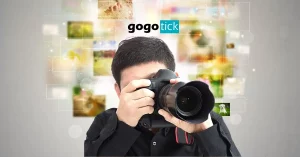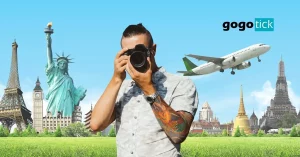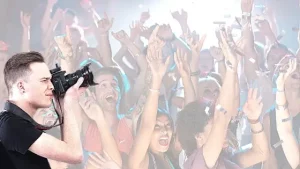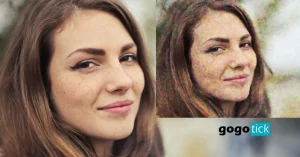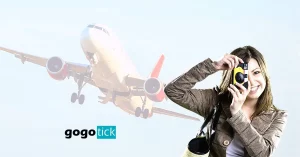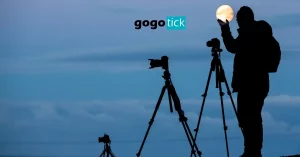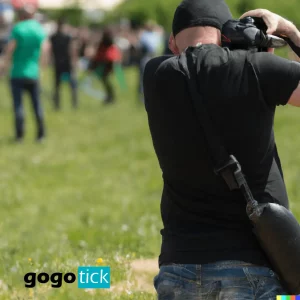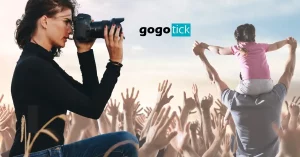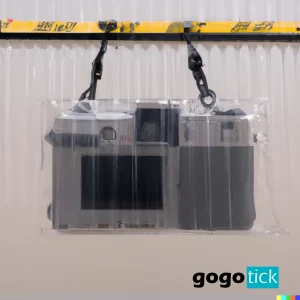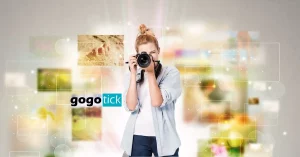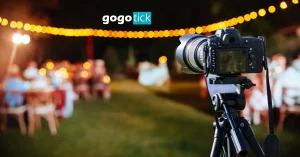Event photography is one of the most dynamic types of professional photography. It requires photographers to adapt to all different sorts of conditions, as well as capture very precise and brief moments out of an event that can be hours long. For this reason, having the right camera lens for event photography is very important, and being a good event photographer is made much more difficult if you’re not working with the correct one. There’s much to discuss when it comes to picking the right camera lenses for event photography, so let’s get started.
What are the best camera lenses for event photography? Here are some great lens choices for event photographers:
- Canon EF 50mm f/1.4 USM
- Nikon NIKKOR 85mm f/1.4G
- Canon EF 70-200mm f/2.8L USM
- Nikon 24 -120mm f/4G
- Sigma 14-24mm f/2.8 DG HSM
- Sony 90mm f/2.8 Macro G
- Nikon NIKKOR 105mm f/2.8G IF-ED
As we’re sure you’ve noted, the above list includes quite a diverse bunch of lenses and consists of both zoom and prime, as well as both wide-angle and telephoto lenses. The differences between them all, as well as the reasons why they were chosen for this list, are essential to understand. However, before we go into each specific lens, let’s take a look at some general considerations that go into picking an event photography lens, which will allow us to better understand why each specific lens earned a spot on our list.
What to Look for in an Event Photography Lens
Event photography can subject photographers and their equipment to several different conditions. Lighting can change rapidly, the setting is continually evolving as people at the event move around, and the subject is often fleeting in that the people are there for the event, not to be photographed. This means that picking the right lens is especially important for event photography, as it’s a very dynamic form of photography that demands more than just a clear picture.
Choosing the Right Aperture
As with picking a lens for any sort of photography, choosing the right aperture for event photography is incredibly important. According to Picture Correct, event photographers should use lenses with an f-stop number of at least f/2.8. Any lenses with apertures larger than this (or smaller f-stops) will introduce too much light and can create issues with noise and blur, both of which are great ways to ruin an otherwise excellent shot.
These smaller apertures allow photographers to be less concerned with lighting too. As flash photography slowly becomes a thing of the past, photographers are becoming increasingly concerned with making sure that their lighting is good. Using too large of an aperture can over-expose the picture if the light isn’t right for it, so smaller apertures are better to make this far less likely to happen.
Prime vs. Zoom Lenses
In addition to choosing the right aperture, event photographers also must consider whether they would be better suited by a prime lens with a fixed focal length or a zoom lens. There are benefits to each, and neither option is clearly or explicitly better than the other for event photography (which is why we’ve included both types on our list).
Prime lenses are exceptional in that they offer more robust color accuracy, as well as allow the photographer to control the depth of field more precisely. According to Digital Trends, prime lenses simply offer better overall photo quality.
Additionally, using the same prime lens for multiple shots makes all the photos appear more uniform in their style. When delivering sets of photos, this can be a huge advantage and make the entirety of the set look far more professional. However, the disadvantage of prime lenses is, of course, that you cannot change the focal length or zoom in and out. This makes them a bit less versatile than zoom lenses.
As we mentioned, zoom lenses are more versatile than prime lenses in that the photographer can adjust the focal length to best suit the shot that they are trying to get at that moment. This is massively beneficial, especially for the folks that don’t want to be burdened by carrying around a bunch of different lenses.
However, zoom lenses lose to prime lenses in most cases when it comes to raw photo quality. As we said, the color accuracy of prime lenses is just better, and the ability to control the depth of field is somewhat lost with zoom lenses.
As you can see, there are both advantages and disadvantages to prime and zoom lenses, and the choice between the two largely depends on the photographer as well as the type of event. However, the chances are high that professionals will be bringing along more than just one lens, so it’s best to have at least one of each type if you really want to be ready for anything.
Durability
While this is a bit less technical than the two lens attributes mentioned above, choosing a lens that can withstand a little bit of abuse is essential for event photographers. Most events that you’ll be shooting will have a lot of moving parts and will require the photographer to always be moving around through crowds.
This can mean that lenses can get bumped around, or in a worst-case scenario, fall victim to a drop to the floor. This can spell disaster for some lenses, while others can handle this with a bit more toughness. For this reason, choosing a lens that can hold up to a little bit of wear and tear is very important for event photographers, mainly because you won’t want to be replacing your expensive lenses between every other event that you shoot.
7 Best Lenses for Event Photography
Mentioned above are some of the important considerations that go into choosing the right lens for event photography. We want to stay away from huge apertures, make the right choice between zoom and prime lenses, as well as choose a lens that can offer us some longevity through daily wear and tear. With those considerations understood and at the forefront of our minds, lets now look at the lenses that fit these needs best.
- Canon EF 50mm f/1.4 USM
The Canon EF 50mm is a great all-around, workhorse sort of lens for event photographers. Its fixed 50mm focal length is right in the middle of standard lenses, meaning that it will work well for both portraits, as well as individual shots that are capturing a larger field of view. So, while this lens can work for wider shots, you’ll still want to be focusing on capturing portrait-style images—of people specifically—to get the most out of this lens.
Additionally, its ability to adjust to a larger aperture makes it great for indoor events where you may have to work in lower light conditions. If you’re shooting an exclusively indoor event where you won’t be capturing wide-angle shots of the whole venue, this very well may be the only lens that you’ll need to bring along.
As a bonus, having a solid 50mm lens in your bag is great for every sort of photographer, not just event photographers. This is a great lens to accompany you to every shoot as a function of its all-around usability in various conditions.
- Nikon NIKKOR 85mm f/1.4G
The Nikon NIKKOR 85mm f/1.4G is a great option for the photographers that are looking for a telephoto lens. This will not be the right instrument for a venue or wide-angle shots, but it will churn out beautiful portrait images time and time again.
Additionally, Lumoid cites this lens as offering much more depth of field control compared to a 50mm lens, allowing photographers to get a bit more creative with their compositions with this lens as opposed to an all-around sort of lens. While this won’t be a great lens to choose if you only want to bring one lens with you, it’s a great thing to have in your bag when you need to take some portrait shots.
- Canon EF 70-200mm f/2.8L USM
The Canon EF 70-200mm f/2.8L is the first zoom or adjustable focal length lens that has made our list, and it’s a great one to get you going in the world of zoom lenses. Its adjustable zoom makes it much more versatile for event photographers, as it will not require you to switch lenses when you want to take shots from varying distances as well as angles.
Additionally, this lens’s constant aperture in tandem with its diverse focal range means that it can create some great portraits with a fantastic bokeh. Being that it’s a zoom lens, having this ability makes this a great all-around lens that will serve you well in many different situations.
- Nikon 24 -120mm f/4G
This Nikon lens is another zoom lens, meaning that it’s a good choice for the photographers that want some versatility in the types of shots that they can get with the same lens. This is taken even a step further in this lens’s ability to adjust all the way to a quite shallow 24mm focal length. At this focal length, the only thing that you’ll want to be taking are wide-angle shots, and this lens does this very well.
However, it’s incredibly versatile in its ability to adjust up to a 120mm focal length, meaning that this lens truly embodies the versatility that event photographers should be looking for.
While a prime wide-angle lens would be able to take better wide-angle shots than this lens, it will be very limiting as a standalone piece because that’s just about all that that lens would be able to do. For this reason, it’s better for beginners to get their wide-angle shots with an adjustable lens, as you can use it for other types of shots as well.
- Sigma 14-24mm f/2.8 DG HSM
While the above-mentioned Nikon 24-120mm adjustable lens is a great option that allows beginners to capture wide-angle shots, the Sigma 14-24mm f/2.8 DG HSM is an even better option for the folks that want a lens completely dedicated to capturing wide-angle shots.
Wide angle shots are essential for events, as they can capture a scene or a venue better than any standard or telephoto lens can. For this reason, many professional and veteran event photographers prefer to have a lens that they can dedicate entirely to taking wide-angle shots only. For this purpose, the Sigma 14-24mm is a great choice.
While it is still adjustable rather than being a prime lens, its range of adjustability is relatively small, so some may choose just to get a prime lens instead. However, albeit little, having this range of adjustability for a wide-angle lens can be very helpful in getting the shot just how you want it.
Overall, this is probably a lens to skip for beginners, but for the veterans that want to really have some versatility in their bag, this lens is certainly something worth looking into.
- Sony 90mm f/2.8 Macro G
The Sony 90mm f/2.8 Macro G is an excellent option for the folks that just want a reliable, all-around telephoto prime lens in their bag. This sort of lens is fantastic for taking beautiful portraits and is specialized in its strengths in that its deeper focal length is not going to work well for wide-angle shots. However, when used in the right conditions and for the right shots, this lens can produce some fantastic results.
Additionally, this lens is moisture- and dust-resistant, meaning that you can be comfortable taking this lens to your outdoor event shoots as well. Overall, this is a fantastic lens for the photographers that want something specialized in their kit for taking great portrait shots with a telephoto focal length. For this same reason, it’s not a great option for beginners looking to get an all-around lens that works in a variety of conditions.
- Nikon NIKKOR 105mm f/2.8G IF-ED
The Nikon NIKKOR 105mm f/2.8G IF-ED was awarded the “overall winner” denotation by Lumoid when they were ranking the best lenses for event photography. This should immediately alert you to the fact that we are dealing with a seriously capable lens here.
The only stipulation that we would add to that title is that this is the best lens for event photography, so long as we’re sticking to portrait and close-up shots. In these situations, this lens will help you capture some genuinely fantastic photographs of any event, allowing you to adequately capture some great detail in the photos that you take.
However, like all other telephoto lenses, this would, of course, not be our choice for an all-around sort of lens, nor would it be our choice for wide-angle shots. The focal length is simply too high for those situations, but that’s not what it’s designed for. Instead, this lens was made specifically to take high-quality close-ups and portraits, and it does a truly exceptional job of doing just that.
Pairing Lenses for Event Photography
Now that we’ve gone over a bunch of great options for event photography lenses, let’s take a look at how these lenses could work together in a kit. In other words, what combinations of two of the above lenses would make for a great setup to bring to an event?
This is an important question to ask, as most photographers have (potentially many) more than just one lens, and picking a good pair of two can be a great choice to add some range to the types of photos that you’ll be able to take at any event.
Pairing 1: Canon EF 50mm & Nikon NIKKOR 105mm
This pairing brings in two prime lenses, a 50mm as well as a 105mm. When you’re pairing lenses, it’s essential to try and avoid redundancy as much as possible, and this pairing does that by choosing both a normal as well as a telephoto lens.
The 50mm Canon lens was our workhorse lens, and it serves the same purpose in this pairing. It will work great for our more basic shots, but can also do some work as a wide-angle lens if we need it to. It has a shallow enough focal length to still capture a wide enough scene like, but it’s not so shallow that it can’t be used for other shots too.
The Nikon 105mm lens, on the other hand, is our more specialized tool in this pairing. This lens will be used for our portrait shots, and any detail shots as well. For example, say you’re shooting a wedding, and you want to get a beautiful portrait of the bride and groom. You very well could use the above 50mm lens, but you’re much better off using the Nikon, as it will give you a nice portrait shot that other lenses wouldn’t be able to get. On the other hand, if you want to get a photo of a large group, you can switch over to the Canon 50mm.
Overall, this pairing of two great prime lenses would serve most photographers very well at almost any event. You have the versatility of the 50mm lens, but the close-up and portrait potential of the 105mm.
In summary, this setup would be great for those photographers who:
- Are shooting smaller venues
- Like to take close-ups and portraits
- Don’t plan on much wide-angle shooting
Pairing 2: Canon EF 70-200mm & Nikon 24-120mm
This pairing is like the above pairing in that it offers versatility; it just does so in a slightly different way. The combination of two zoom lenses can be great for the photographers that want the ultimate amount of versatility, but who aren’t particularly concerned with getting all that creative with their composition. The Canon zoom lens is great for shooting portrait style and other basic shots, but it won’t give you the same magic that the NIKKOR 105mm will for those same types of shots. However, it can adjust focal length, making it far more versatile as a telephoto lens.
On the other hand, we’ve chosen another adjustable lens, with a smaller minimum focal distance, to go along with the Canon EF 70-200mm, giving you some range with the wide-angle shots as well. The Nikon 24-120mm lens will allow you to capture some fantastic wide-angle shots, and can be great for when you’re shooting a larger venue and may need to capture larger rooms in a single shot. However, its adjustability allows you to leave it one for other shots too, though you have the Canon in your back pocket for when you’re done with the wider-angle shooting.
Overall, this is again a very versatile pairing, though will have less potential for specialization than the previous one. Compared to pairing 1, pairing 2 will give you more room to work with different angles, shooting distances, and focal lengths, but less ability to take stunning up-close and portrait shots.
In summary, pairing 2 would be great for photographers who:
- Are shooting medium-sized venues
- Like to have maximum versatility
- Don’t care to specialize in one type of shot
Pairing 3: Sony 90mm Macro G & Sigma 14-24mm
This final pairing is not as versatile as the above two, though it allows photographers to really dive into some more creative compositions and specialty shots. Neither of these lenses are terribly versatile on their own; instead, they are both specialty sort of lenses, though their specialties are unique and different from one another. What this means is that, when paired together, these two lenses give photographers two very differently specialized tools, allowing you to take some great shots in two very different styles.
The Sony 90mm lens is a great telephoto lens whose specialty is portrait shots. This lens is excellent for taking photos of one person or small groups of people and will give you great control over the depth of field that you’re working with.
The Sigma 14-24mm lens, on the other hand, is going to be used for wide-angle shots. This lens has a very shallow focal length, which will allow you to capture vast scenes in a single shot. This means that shooting big rooms or large outdoor spaces or landscapes surrounding the event is a breeze and can be done exceptionally well with this lens.
Paired together, the Sony’s ability to shoot portraits and the Sigma’s excellent wide-angle capabilities make this a pairing that will allow photographers to take beautiful shots with more specialized and creative compositions. It won’t be as versatile as the other two pairings that we’ve mentioned, but what it lacks in versatility, this pairing more than makes up for in allowing you to create some powerful shots.
In summary, this pairing will work great for photographers who:
- Are shooting larger venues
- Like to have specialized rather than versatile lenses
- Like to be able to take true wide-angle shots
Final Tips for Making the Most of Your Lens
Now that we’ve gone over some great lens options for event photography, it may be helpful to briefly discuss some ways to get the most out of those lenses. After all, a camera or lens is only as good as the photographer behind it, so below are some quick tips for event photography.
- Shoot Expressions
Capturing an event effectively is not just a matter of taking photos of what’s happening; it’s a matter of capturing the emotions involved with what’s happening. One of the best ways to do this is by looking specifically for people’s expressions.
Facial expressions are a universal language, and they express emotion and tell the story of an event better than any other one thing can. So, when you’re shooting an event, look to capture specific expressions on people’s faces to help tell the emotional story of the event.
- Make Candid Shots Truly Candid
Getting some good candid shots is essential for any event, but they’re not worth much if they don’t feel and look natural. When you’re taking candid shots, make sure that they’re truly candid in that the subjects aren’t aware they’re being photographed, as the moment can be ruined otherwise.
- Don’t Be Afraid to Take Posed Photographs
While candid shots are generally preferred to posed photographs in event photography, you’re still going to want to get at least a few posed pictures as well. Follow the rules of posing, and make sure that you choose the right subjects to ask to pose. Mixing in some good posed photographs can make a set much more interesting and diverse.
- Get People to Feel Comfortable
Making people feel comfortable is an incredibly important trait for event photographers to have. Shooting subjects that are uncomfortable not only create bad pictures, but it makes everyone feel a bit awkward. So, if someone looks uncomfortable, don’t be afraid to try to talk to them and make them less nervous. Both that person and the final pictures will thank you for it.
Final Thoughts
Picking the right lens for an event can truly make or break your ability to capture the shots that you want to achieve. It’s important to know exactly what your goals are, as well as match your equipment to both the venue and the event. If you do this, as well as follow the quick tips mentioned above, you’re well on your way to getting some fantastic shots at your next event.
Check out this article to master the Camera Settings for Event Photography.
